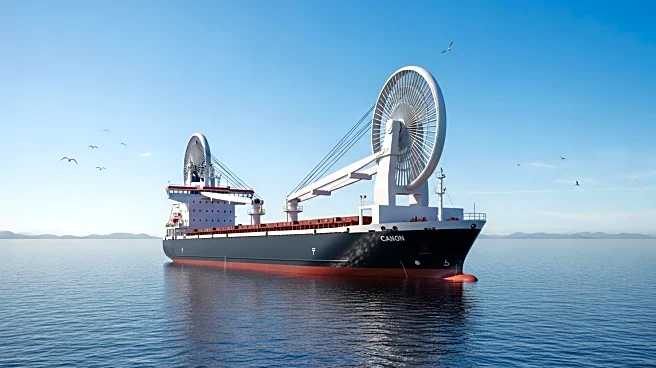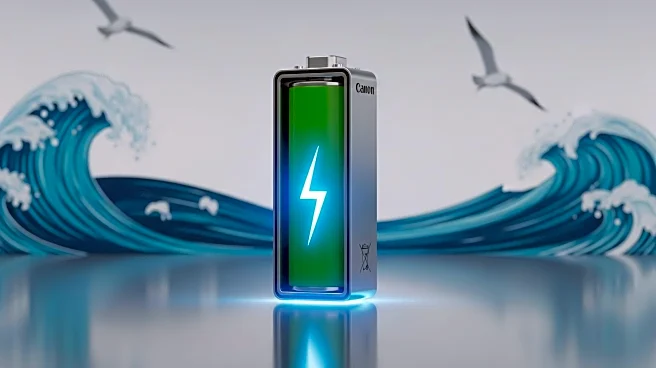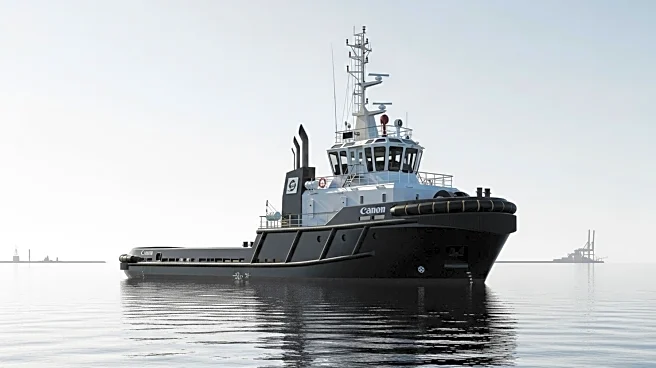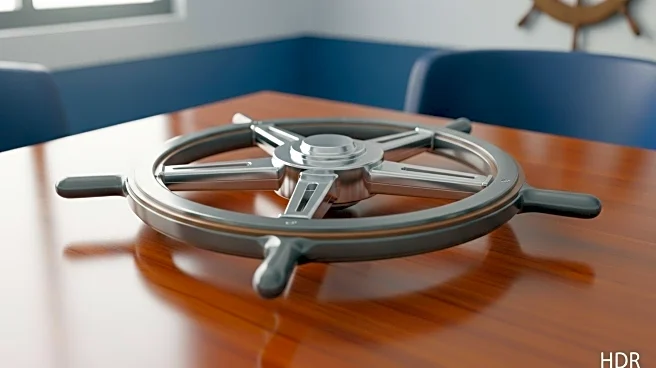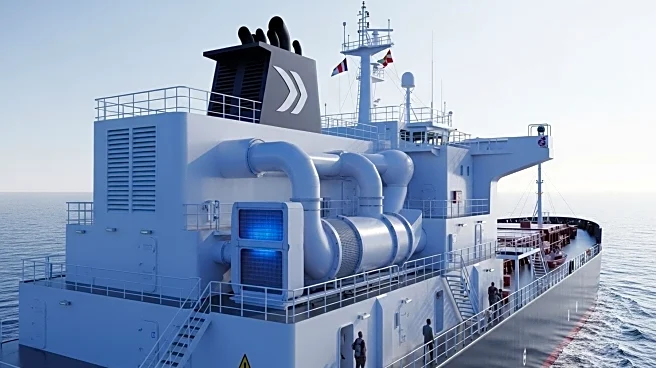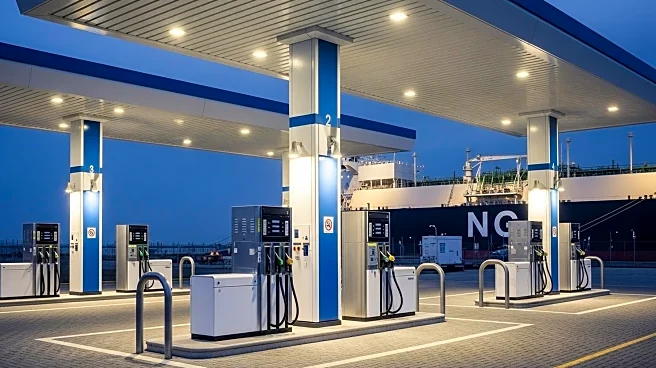What is the story about?
What's Happening?
The century-old Flettner rotor technology, initially demonstrated in 1925, is experiencing a resurgence in the maritime industry. Originally designed by German inventor Anton Flettner, these spinning towers harness wind to generate forward thrust, known as the Magnus effect. Despite initial interest, the technology did not gain traction due to the low cost of fossil fuels and the economic impact of the Great Depression. Today, modern decarbonization targets have renewed interest in this technology, with at least 35 commercial freight ships now utilizing Flettner rotors to improve fuel efficiency and reduce greenhouse gas emissions. The Finnish company Norsepower has been instrumental in reviving the design, producing 35 sails with orders for an additional 48. The rotors, now made with lighter composite materials and driven by artificial intelligence, can cut fuel bills by up to 20%.
Why It's Important?
The revival of Flettner rotor technology is significant in the context of global efforts to reduce carbon emissions and improve fuel efficiency in the shipping industry. As shipping is a major contributor to greenhouse gas emissions, technologies that can reduce fuel consumption are highly valued. The ability to retrofit existing ships with Flettner rotors makes this technology accessible and practical for widespread adoption. This development aligns with international decarbonization goals and offers a sustainable solution for the maritime sector. Companies like Norsepower are leading the charge, indicating a potential shift in industry standards towards more eco-friendly practices.
What's Next?
The continued adoption of Flettner rotors is expected to grow, with more ships being built 'rotor ready' to accommodate this technology. As the market for fuel-efficient systems expands, shipping companies may increasingly invest in retrofitting their fleets. The use of artificial intelligence to optimize rotor positioning against wind direction could further enhance efficiency, making this technology a staple in modern shipping. Stakeholders in the maritime industry, including shipbuilders and operators, are likely to monitor the performance and cost-effectiveness of Flettner rotors closely, potentially influencing future regulatory standards and industry practices.
Beyond the Headlines
The resurgence of Flettner rotor technology highlights the importance of innovation in addressing environmental challenges. It underscores the potential for historical technologies to be adapted and improved with modern materials and techniques. This development also reflects broader trends in the transportation sector towards sustainability and the integration of artificial intelligence in optimizing operations. The success of Flettner rotors could inspire further exploration of other dormant technologies that may contribute to environmental goals.
AI Generated Content
Do you find this article useful?
